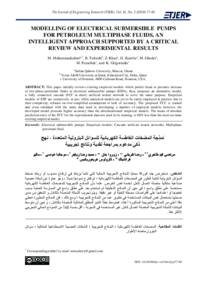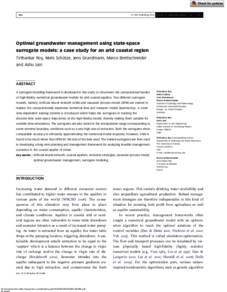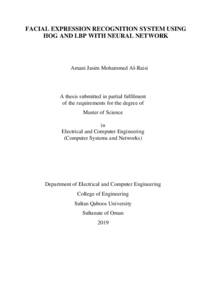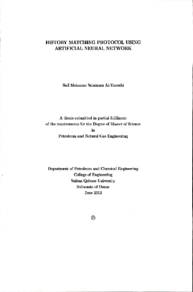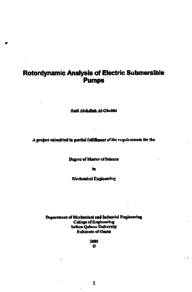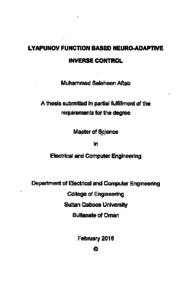Document
Modelling of electrical submersible pumps for petroleum multiphase fluids, an intelligent approach supported by a critical review and experimental results.
Identifier
DOI: 10.24200/tjer.vol16iss2pp77-86
Source
The journal of engineering research (TJER), v. 16, no. 2, p. 77-86.
Contributors
Tafreshi, Reza., Author
Khan, Zohreh., Author
Ziaiefar, Hamid Reza., Author
Ghodsi, Mojtaba., Author
Franchek, Matthew., Author
Grigoriadis, Karolos., Author
Other titles
نمذجة مضخات غاطسة كهربائية للسوائل البترولية المتعددة، نهج ذكي مدعوم بمراجعة نقدية ونتائج تجريبية.
Country
Oman.
City
Muscat
Publisher
College of Engineering, Sultan Qaboos University.
Gregorian
2019
Language
English
English abstract
This paper initially reviews existing empirical models which predict head or pressure increase of two-phase petroleum fluids in electrical submersible pumps (ESPs), then, proposes an alternative model, a fully connected cascade (FCC in short) artificial neural network to serve the same purpose. Empirical models of ESP are extensively in use; while analytical models are yet to be vastly employed in practice due to their complexity, reliance on over-simplified assumptions or lack of accuracy. The proposed FCC is trained and cross-validated with the same data used in developing a number of empirical models; however, the developed model presents higher accuracy than the aforementioned empirical models. The mean of absolute prediction error of the FCC for the experimental data not used in its training, is 68% less than the most accurate existing empirical model.
ISSN
Online: 1726-6742
Print: 1726-6009
Arabic abstract
تستعرض هذه الورقة النماذج التجريبية الحالية التي تتنبأ بزيادة في ارتفاع منسوب أو ضغط السوائل البترولية ثنائية الطور في المضخات الغاطسة الكهربائية، ثم تقترح نموذجًا بديلاً عبارة عن شبكة عصبية صناعية متتالية متصلة اتصالًا كاملاً (FCC) لخدمة نفس الغرض. تُستخدم النماذج التجريبية للمضخات الغاطسة الكهربائية على نطاق واسع، في حين أن النماذج التحليلية لم تعتمد بعد بسبب تعقيدها واعتمادها على افتراضات مبسطة أو غير دقيقة. تم تدريب نموذج FCC والتحقق من صحته باستخدام نفس البيانات التي طُورت بها النماذج التجريبية الأخرى، وأظهر دقة تنبؤ أعلى. بلغ متوسط خطأ التنبؤ المطلق لنموذج FCC بالنسبة للبيانات غير المستخدمة في التدريب 68% أقل من النموذج التجريبي الأدق.
Category
Journal articles

